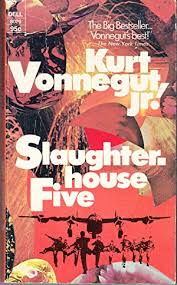I have lots of books.
I'm trying to go through and filter the ones with which I can part and with which I want to read again.
So, I'm rereading some of the books that I may end up on the departure pile. It's a sad, mournful task, like I'm saying goodbye to old friends, but like I said, I have lots of books.
I recently reread my old copy of Slaughterhouse Five. It's falling apart, and I need to turn the crumbling pages as if it's 100 years old, but it's as good as I remember it. Funny, much of the rhetoric and narrative have been imitated since Kurt Vonnegut wrote this--the narrative within the narrative, the overlapping time, the repetition--but the quality and wit still stand.
But I want to write about a different book: The Castle of Otranto. I would not have read this if I hadn't had to read this for a wonderful graduate class about the progression of novels of the gothic and romance. This class mapped the progression of gothic and romance novels from the 1600s to the early 1900s. Fascinating stuff.
The Castle of Otranto was in the list.
This is an extraordinary book for several reasons. First, printed in 1764, this is credited as being as the first gothic novel.
Let me pause here. The term "gothic" is very problematic, especially in contemporary times, when we think more about Trent Reznor and emo than traditional gothic. But this novel created the first literary world in charming castles, ancient history, romantic clashes, illusive ghosts, and heroic honor.
As a novel from 1764, you can't really sit down to read this like you would sit down to read Dean Koontz or Janet Evanovich. However, this book offers such a foundational look into the history of the novel and the genre, and we rarely have such a definitive novel as to say, "This novel set the foundation for all other novels like it."
In this case, I think we can.
I'm keeping this one for a few more years.



No comments:
Post a Comment